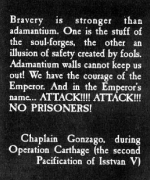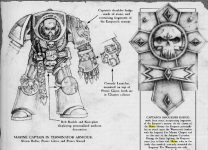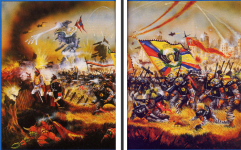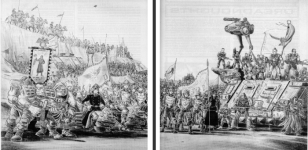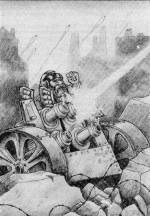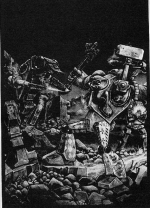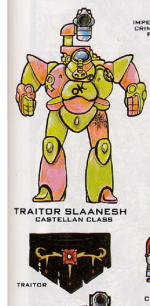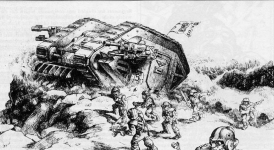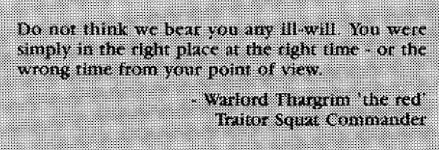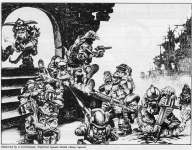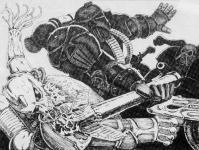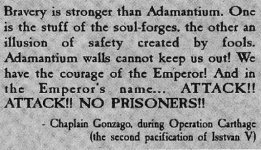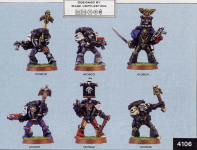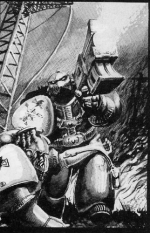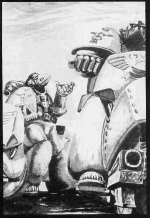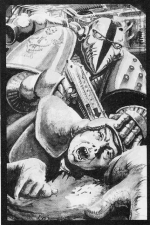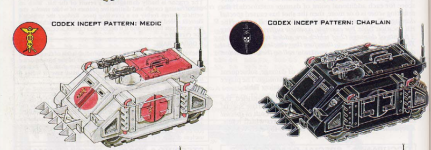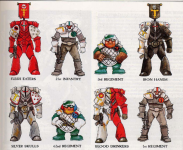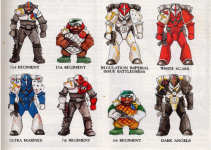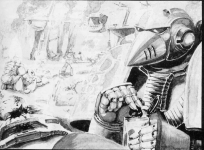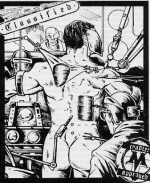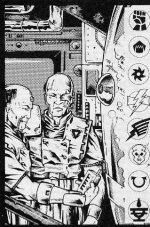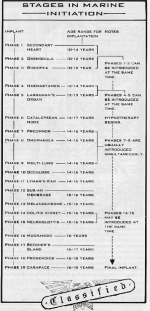Book of the Astronomican
So, what does the future hold for WH40K? Well, there are many new model releases planned for 1988, including the first plastic vehicles and some more plastic boxed sets. There are no less than three forthcoming books featuring WH4OK material, including the long-awaited Realm of Chaos and Warhammer Siege. The first all-WH40K supplement is currently in progress, and will hopefully be out in the latter half of 1988. This is the spaceship combat game, including special boarding action rules, ship-to-ship combat, and the full low- down on Imperial ships and fleet organisation. And we have other plans, too... but you'll just have to wait and see what they are.
Best Wishes
Rick Priestley
The Horus Heresy Is reckoned by many to rate as the greatest single disaster ever suffered by the Imperium. The specific details of the heresy are known only to the Emperor, but Is broader history is the stuff of popular legend. According to one version of the tale, Horus was once the most trusted servant of the Emperor, But In his heart there dwelt a hidden evil, and he became seduced by this evil, and came to nurture demons and other forces of destruction. Horus marched upon Earth with a third part of the hosts of the Imperium which he had seduced to his purpose. For seven days and seven nights the hosts battled until the Emperor caught Horus by the heel and cast him to the Eye of Terror and with him the third part of the hosts of the Imperium.
Listen closely Brothers, for my life's breath is all but spent. There shall come a time far from now when our chapter itself is dying, even as I now am dying, and our foes shall gather to destroy us. Then my children, I shall listen for your call from whatever realms of death hold me, and come I shall no-matter what laws of life and death forbid. At the end I will be there. For the final battle. For the Wolftime.
Last Words of Commander Leman Russ Founder of the Spacewolves.



